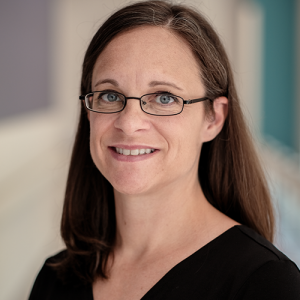The neurosurgery program at Children’s Minnesota has the largest team of pediatric neurosurgeons in the region, including Dr. Amy Bruzek, who joined the program last summer. Dr. Bruzek has special expertise in peripheral nerve surgery to treat brachial plexus injury, as well as single-level and multi-level laminectomy selective dorsal rhizotomies for spasticity.
Dr. Bruzek trained with the late Dr. Lynda Yang, world-renowned peripheral nerve neurosurgeon, and now offers patients nerve transfers and grafts for weakness or paralysis in hands and arms to provide or improve function after injury or birth. Dr. Bruzek also received unique training as one of a small group of physicians who learned single-level laminectomy selective dorsal rhizotomies directly from Dr. T.S. Park, who has performed more than 6,000 selective dorsal rhizotomies on patients all over the world.
“Pediatric neurosurgery is constantly improving, which is exciting. We have advanced minimally invasive approaches for such issues as craniosynostosis and the treatment of tumors and epilepsy through laser therapy,” said Dr. Bruzek. “I’m eager to help expand our pediatric neurosurgery services at Children’s Minnesota as we offer outstanding clinical care in a compassionate and collaborative environment.”

Refresher: Brachial plexus injury in kids and newborns
The brachial plexus is a network of nerves in the shoulder that carries movement and sensory signals from the spinal cord to the arms and hands. Injuries from trauma to the neck can cause pain, weakness, numbness and paralysis in the arm and hand. Some brachial plexus injuries heal on their own or with physical and occupational therapy, but more severe injuries require surgery to restore normal function.
Brachial plexus injuries occur during birth in 1 to 2 births per 1,000, with larger babies or babies in breech position at an increased risk. When the baby’s head is stretched away from the shoulder, the brachial plexus nerves can get injured. Other pediatric brachial plexus injuries are often due to sports injuries, falls or accidents.
Refresher: Selective dorsal rhizotomy
Selective dorsal rhizotomy (SDR) is a spinal surgery that can permanently reduce leg spasticity in children with cerebral palsy. The procedure cuts some of the sensory nerves between the legs and spinal cord. A multi-level laminectomy offers a full view of the nerve roots to be cut, with a trade-off of having more pain and a longer recovery after surgery. The single-level laminectomy only removes one bone that does not need to be put back in place, with often a shorter recovery period. According to Dr. Bruzek, both approaches have benefits and risks; both options are offered by Dr. Bruzek when surgery is necessary.
About Children’s Minnesota’s neuroscience program
The neuroscience program at Children’s Minnesota provides care for more pediatric neurology, brain tumor and epilepsy patients than any other hospital in the region, performing more than 500 neurosurgeries each year.
Doctors and healthcare providers call for 24/7 patient referral, admission and neonatal transport assistance. Learn more.